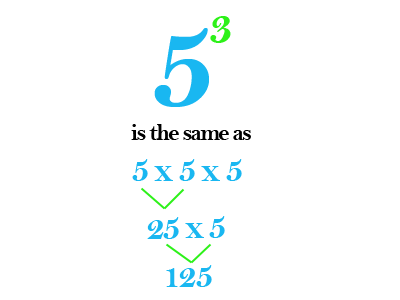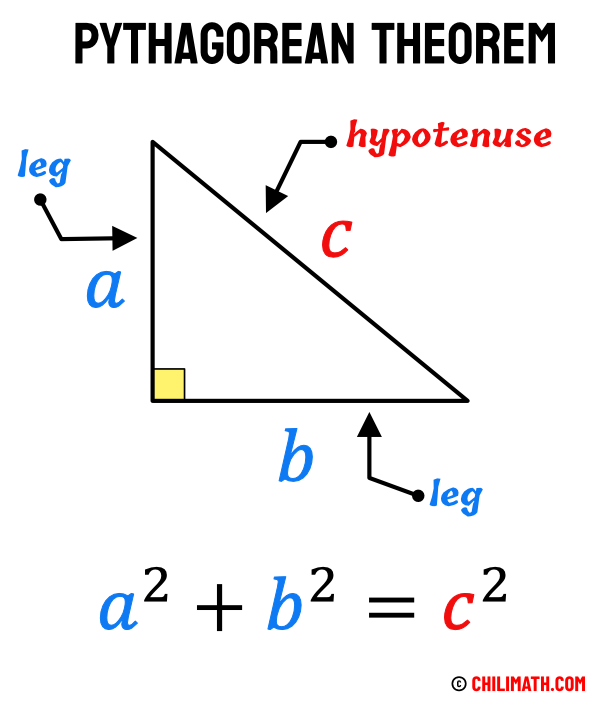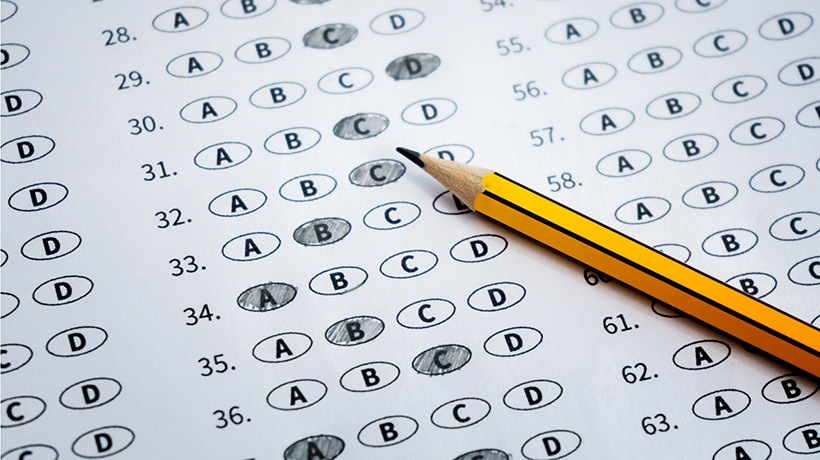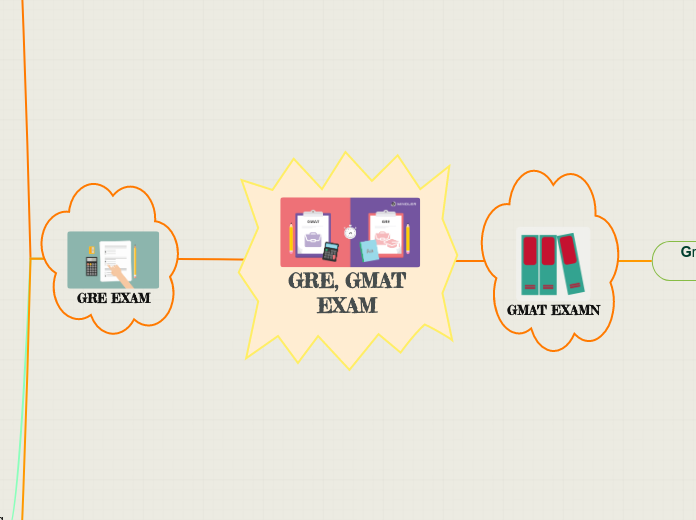
GRE, GMAT EXAM

GMAT EXAMN
Graduate Management Admission Test

To assesses the command of basic arithmetic, algebra, geometry, multi-source data analysis, and grammar.

It measures the ability to analyze and evaluate written material, think critically, and solve problems.opic

The content on the GMAT is broken down into four scored test sections:

1. Analytical Writing Assessment or Essay
30 min
1 prompt
6 points max
Critiquing the author's argument, analyzing the author's evidence and reasoning.
1. To clearly identify and analyze parts of the argument.
2. To develop and organize their ideas thoughtfully and logically.
3. To connect their statements with clear transitions.

2. The. Integrated reasoning
30 min
12 prompt
8 points max
Types of questions
a. Multi-Source Reasoning-Measures
b. Table Analysis-Measures
c. Graphics Interpretation-Measures
d. Two-Part Analysis-Measures
The Integrated Reasoning section tests the ability to:
1. Synthesize information presented in graphics, text, and numbers
2. Evaluate relevant information from different sources.
3. Organize information to see relationships and solve problems.
4. Combine and manipulate information to solve complex problems.

3. The Verbal reasoning section
65 min
36 prompt
51 points max
Three types of questions
a. Reading Comprehension measures
b. Critical Reasoning assesses
c. Sentence Correction measures

4. The Quantitative reasoning
62 min
31 prompt
51 points max
To measure the ability to reason mathematically, solve quantitative problems, and interpret graphic data.
There are two types of questions
Problem Solving
To use logic and analytical reasoning to solve quantitative problems and to indicate the best of five answer choices
Data Sufficiency
To recognize which data is relevant, and determine what point there are data to solve the problem.

GRE EXAM
Paper-based or computer-based tests.
Consist of questions that reflect the thinking and skills students need to be successful in graduate programs, including business and law
test measures
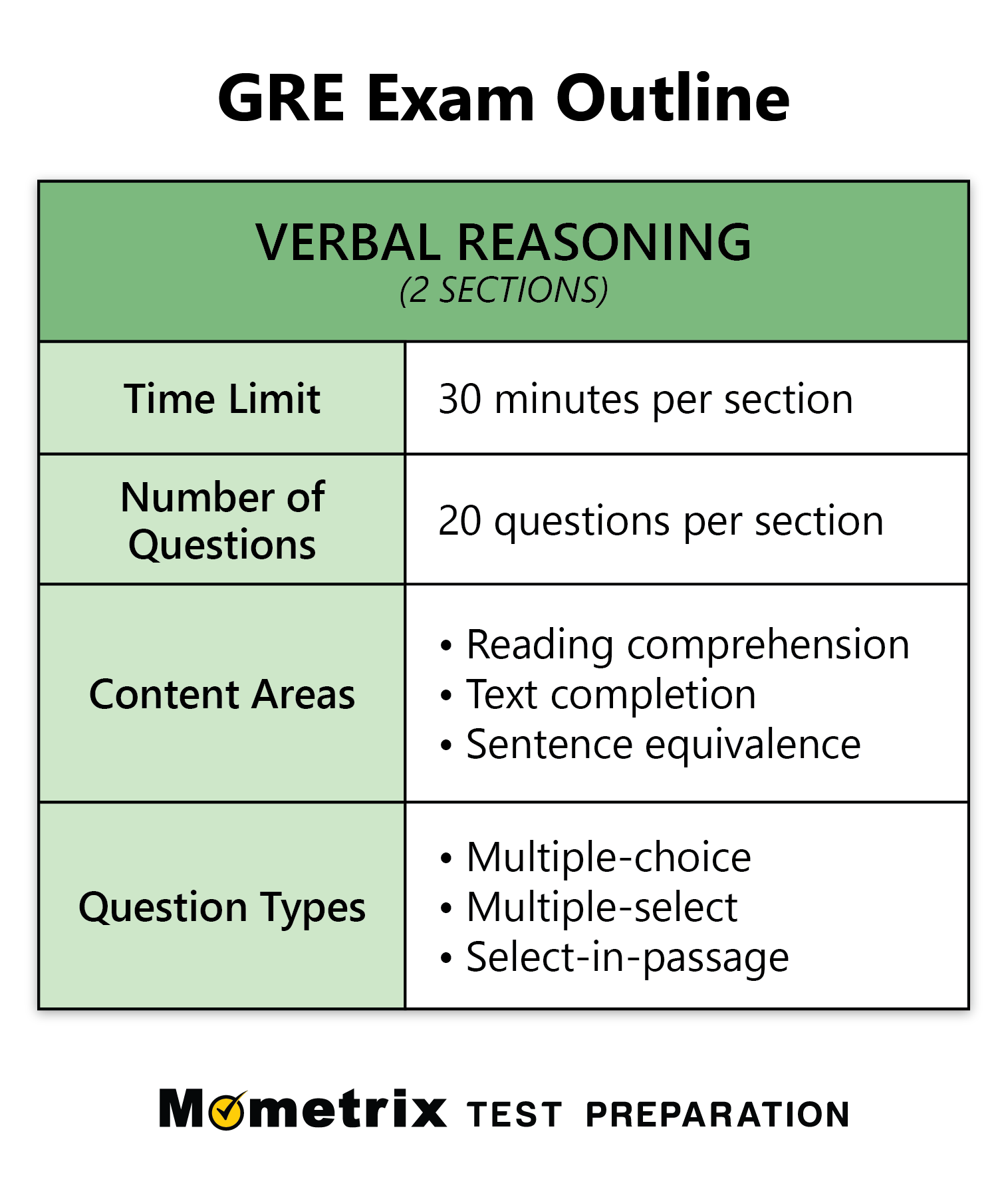
Verbal reasoning
Measures the ability to
Analyze and draw conclusions
from discourse.
Understand the meaning of individual
words, sentences and entire texts.
Select important points.
Types of questions
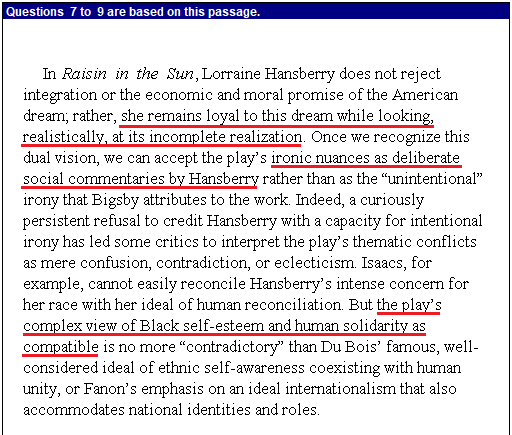
Reading Comprehension
Multiple-choice Questions
Select One Answer Choice
Multiple-choice Questions
select one or More Answer Choices
Select-in-Passage
Select the sentence that meets a certain description.
Subject matter areas
Humanities
Social sciences
Natural sciences
Length from one paragraph to four or
five paragraphs.

Text Completion
Fill in the blanks.
Create a coherent and meaningful whole.
Short passages.
Essential words are omitted.
Structure
Composed of one to five sentences.
One to three blanks.
Three answer choices per blank .
Answer choices
Single correct answer.

Sentence Equivalence
The structure consists a singlé sentence with , one blank and six answer choices
Students have two select two options

Quantitative reasoning
Skills
Understanding of elementary mathematical concepts
Ability to reason quantitatively
To model and solve problems with quantitative methods
Areas to assess skills
Arithmetic
Properties and types of integers
Arithmetic operations, exponents and roots, and concepts
Algebra
Operations with exponents, coordinate geometry, graphs and slopes of lines.
Geometry
Parallel and perpendicular lines
Pythagorean theorem and angle measurement in degrees
Ability to construct proofs isn't tested
Data analysis
Descriptive statistics
Interpretation of data in tables and graphs
Elementary probability
Conditional probability
Counting methods
Questions Types
Quantitative comparison questions
Multiple-choice Questions
Select one answer choice
Multiple-choice Questions
Select one or more answer choices
Numeric Entry Questions
Analytical Writing
2 analytical writing tasks
Analyze a problem
Measures the critical thinking ability of students.
Analyze an argument
Measures the ability to understand, analyze and evaluate arguments.
Criticize the author's argumentation, analyzing his evidence and reasoning.
Clearly identify and analyze the parts of the argument.
Develop and organize their ideas in a thoughtful and logical manner.
Connect your statements with clear transitions.
Test Structure
30-35 minutes
1 Task- 20 questions
Reference: ESPE (2023). GRE AND GMAT. Theme 6. Recovered from: https://evirtual.espe.edu.ec/programas_scorm.cgi?id_curso=24080&id_unidad=274013&id_pkg=123072&wAccion=ver_scos
